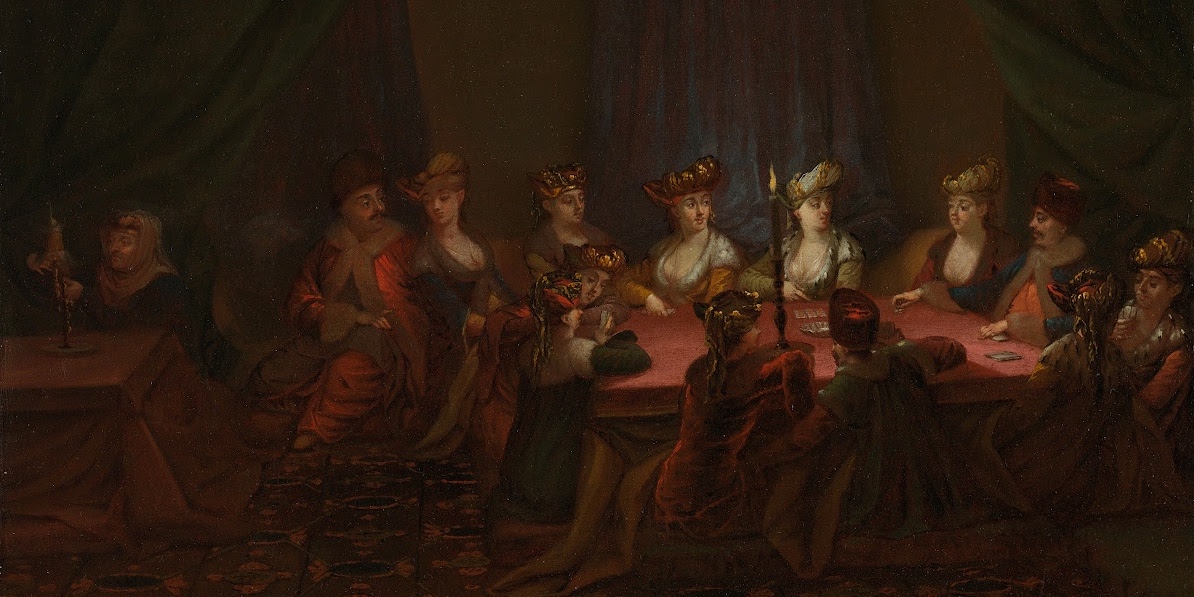The Story Has It
Episode 419
Download the podcast
Feed | iTunes | GooglePlay | SoundCloud
Ottoman literature is heavily associated with verse, namely, Ottoman court poetry, and to some extent, folk literature. Ottoman stories, however, remain unexplored, even though they circulated in the empire and entertained many. For us, today, they are an invaluable source to study daily life, gender and space in the early modern Ottoman world. What is an Ottoman story? What do Ottoman stories tell us? In this episode, İpek Hüner Cora joins the podcast to talk about fictional prose stories in the Ottoman Empire and we discuss the gendered and spatial aspects of stories scattered in manuscript collections.
Stream via SoundCloud
contributor Bios
 |
İpek Hüner Cora completed her Ph.D. at the Department of Near Eastern Languages and Civilizations at the University of Chicago in Fall 2018. She is currently an instructor at Boğaziçi University teaching classes on Ottoman Turkish, literature, gender, and space. |
 |
Işın Taylan is a PhD candidate in History at Yale University. Her research examines the Ottoman intellectuals’ production of geographical knowledge in the seventeenth and eighteenth centuries. |
Credits
Episode No. 419
Release Date: 15 July 2019
Recording Location: Istanbul, Turkey
Audio editing by Işın Taylan
Music: Katibim (Uskudar'a Gider iken) - Safiye Ayla
Images and bibliography courtesy of İpek Hüner Cora
Release Date: 15 July 2019
Recording Location: Istanbul, Turkey
Audio editing by Işın Taylan
Music: Katibim (Uskudar'a Gider iken) - Safiye Ayla
Images and bibliography courtesy of İpek Hüner Cora
Images
The accompanying visuals for this episode contain sexually explicit illustrations. To view, click here.
 |
| "An Adulterous Husband and His Lover Butted by a Ram," illustration from Nefḥāt ül-ezhār, Folio 55 b. Label: "This illustration depicts an adulterous husband and his lover being unexpectedly butted by a ram into a room full of surprised guests." Image via Walters Art Museum |
 |
| "A Man Exposing Himself Through A Hole in the Fence," illustration from Sobḥet ül-ebkār, Folio 91 a. Label: "This illustration depicts an man exposing himself through a hole in the fence while the women on the other side tie his penis with a string." Image via Walters Art Museum |
Select Bibliography
Alshech, Eli. “‘Do Not Enter Houses Other than Your Own’: The Evolution of the Notion of a Private Domestic Sphere in Early Sunnī Islamic Thought.” Islamic Law and Society 11, no. 3 (2004): 291–332.
Ambros Edith Gülçin, et al., “Ottoman Women in Public Space: An Introduction.” In Ottoman Women in Public Space, edited by Ebru Boyar and Kate Fleet, 1–17. Leiden: Brill, 2016.
Aynur, Hatice. “Ottoman Literature.” In The Cambridge History of Turkey, Vol. 3, edited by Suraiya Faroqhi, 481–520. Cambridge: Cambridge University Press, 2006
Babayan, Kathryn and Afsanah Najmabadi (editors). Islamicate Sexualities: Translations Across the Temporal Geographies of Desire. Cambridge: Harvard Middle Eastern Monographs, 2008.
Bertram, Carel. Imagining the Turkish House: Collective Visions of Home. Austin: University of Texas Press, 2008.
Darnton, Robert. The Great Cat Massacre and Other Episodes in French Cultural History. New York: Vintage Books, 1985.
Cinānī. Bedāyiʿü'l-ās̱ār. Edited by Osman Ünlü. Cambridge: Department of Near Eastern Languages and Civilizations, Harvard University, 2009.
Duncan, Nancy. “Renegotiating Gender and Sexuality in Public and Private Spaces.” In BodySpace: Destabilising Geographies of Gender and Sexuality, edited by Nancy Duncan, 127–144. New York: Routledge, 1996.
Kavruk, Hasan. Eski Türk Edebiyatında Mensûr Hikâyeler. Istanbul: M.E.B., 1998.
Khoury, Dina Rizk. “Slippers at the Entrance or Behind Closed Doors: Domestic and Public Spaces for Mosuli Women.” In Women in the Ottoman Empire: Middle Eastern Women in the Early Modern Era, edited by Madeline C. Zilfi, 105–127. Leiden: Brill, 1997.
Kuru, Selim S. “Representations: Poetry and Prose, Premodern.” In Encyclopedia of Women & Islamic Cultures. Leiden: Brill, 2003–2007.
Kuru, Selim S. “The Literature of Rum: The Making of a Literary Tradition (1450-1600).” In the Cambridge History of Turkey, vol. 2, edited by Suraiya Faroqhi and Kate Fleet, 548-92. Cambridge: Cambridge University Press, 2013.
Lewis, Franklin. “One Chaste Muslim Maiden and a Persian in a Pear Tree: Analogues to Boccaccio and Chaucer in Four Earlier Arabic and Persian Tales.” In Metaphor and Imagery in Persian Poetry, edited by Ali Ashgar Seyed-Gohrab, 137–203. Leiden; Boston: Brill, 2012.
Mills, Margaret A. “The Gender of the Trick, Female Tricksters and Male Narrators.” Asian Folklore Studies, 60, no. 2 (2001): 237–258.
Najmabadi, Afsaneh. “Reading and Enjoying: ‘Wiles of Women’ Stories as a Feminist.” Iranian Studies 32, no. 2 The Uses of Guile: Literary and Historical Moments (1999): 203–222.
Peirce, Leslie. “Seniority, Sexuality and Social Order: The Vocabulary of Gender in Early Modern Ottoman Society.” In Women in the Ottoman Empire: Middle Eastern Women in the Early Modern Era, edited by Madeline C. Zilfi, 169–196. Leiden: Brill, 1997.
Ünlü, Osman. “Modern Araştırmacının Klasik Hikâyeye Bakışı Üzerine Değerlendirmeler.” TÜBAR XXIX (2011): 461–474.
Sayers, David Selim. “The Wiles of Women in Ottoman and Azeri Texts.” PhD Dissertation, Princeton University, 2014.
Schick, Irvin Cemil. “The Harem as Gendered Space and the Spatial Reproduction of Gender.” In Harem Histories: Envisioning Places and Living Spaces, edited by Marilyn Booth, 69–84. Durham: Duke University Press, 2010.
Veyne, Paul. Did the Greeks Believe in Their Myths? Chicago: University of Chicago Press, 1988.
Yılmaz, Fikret. “XVI. yüzyıl Osmanlı Toplumunda Mahremiyetin Sınırlarına Dair.” Toplum ve Bilim 83 (Winter 1999/2000): 92–110.
Ze'evi, Dror. Producing Desire: Changing Sexual Discourse in the Ottoman Middle East, 1500-1900. Berkeley: University of California Press, 2006.











Comments
Post a Comment
Due to an overwhelming amount of spam, we no longer read comments submitted to the blog.